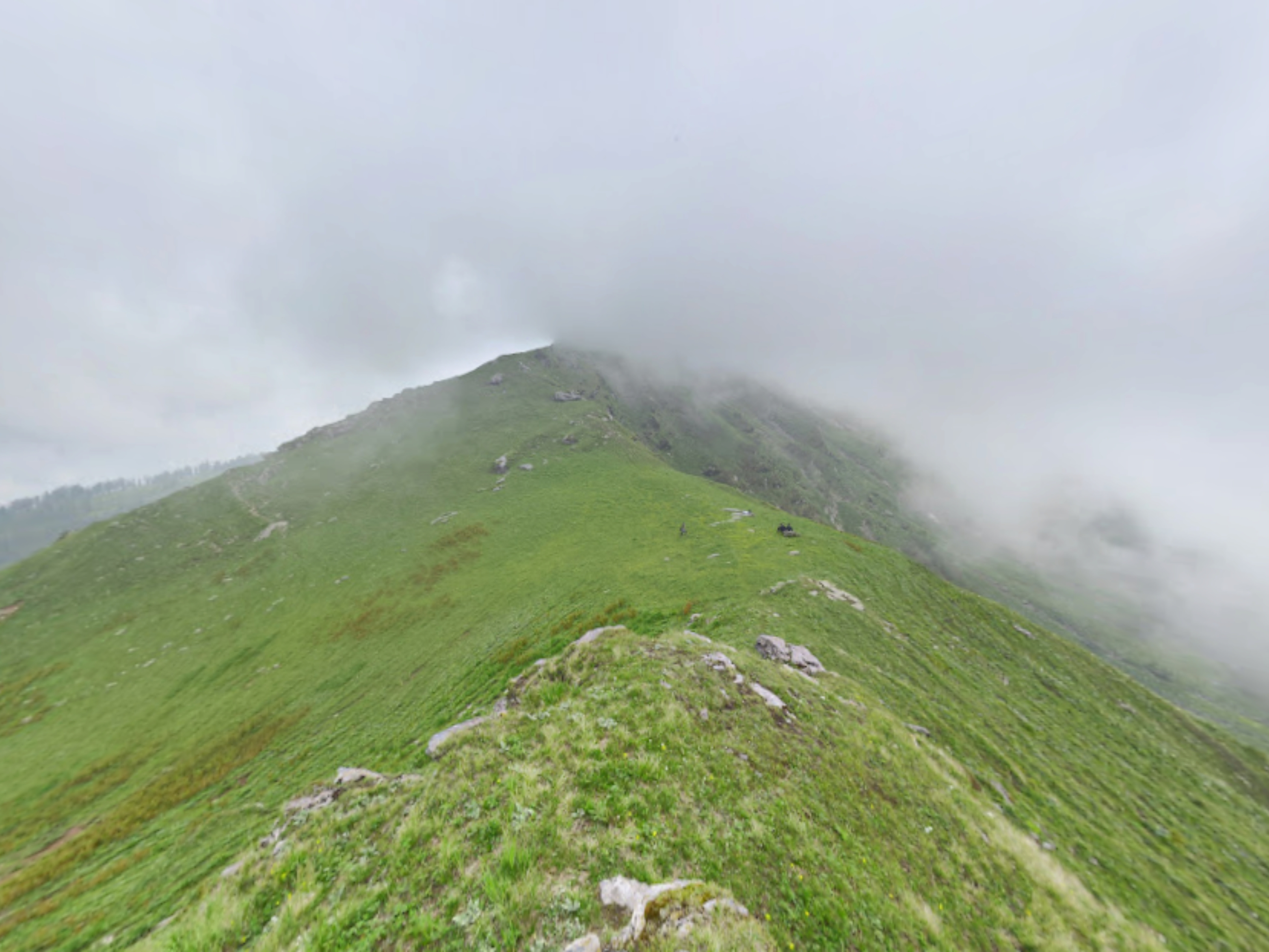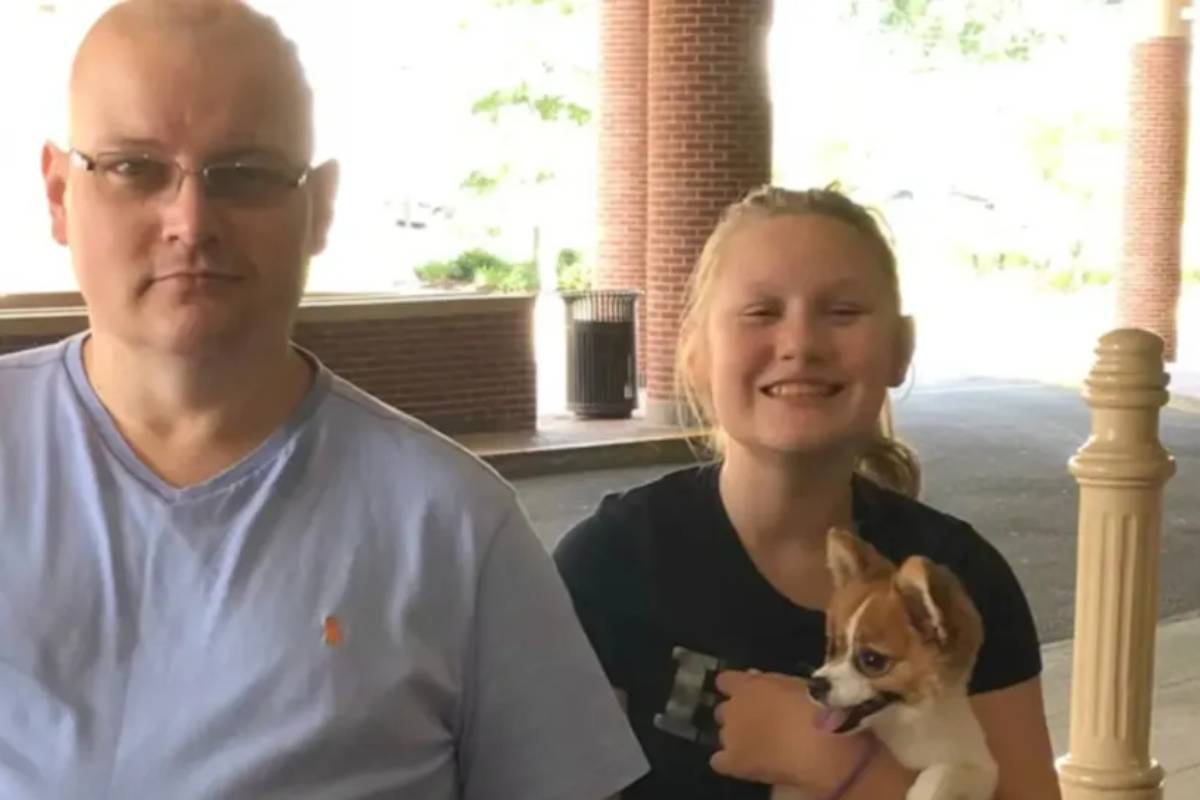8 Filmmaking Lessons from the Wild, Disciplined Mind of David Lynch

David Lynch was a true original, so singular that we had to invent the term “Lynchian” just to describe his work. The fact that we all instantly know what that means speaks to how powerfully his style and sensibility came through in every frame, through a deep, intentional marriage of form and content. While his talent was once-in-a-generation, that uniqueness was something he cultivated and protected through his creative process.
“He had that infinite wonder of everything, he would get transfixed into just the sheer act of exploration, experimentation, discovery,” said longtime Lynch collaborator Dean Hurley on the Filmmaker Toolkit podcast. “He loved to get into the sandbox of experimentation because the emotional spark that happens when you discover something, or stumble upon something, to him was the secret sauce to how things started. You’re rubbing a flint against something and you’re creating that spark that hopefully jumps onto something and creates a fire. He was always doing that.”
More from IndieWire
Tom Holland Calls Christopher Nolan's 'Odyssey' the 'Job of a Lifetime,' Promises a Movie 'Unlike Anything We've Ever Seen'
Luca Guadagnino's OpenAI Movie Will Depict Elon Musk: He's 'Not So Bad, as Far as Dictators Go,' Says the Script - Report
AdvertisementAdvertisement#«R25e4kr8lb2m7nfddbH1» iframe AdvertisementAdvertisement#«R45e4kr8lb2m7nfddbH1» iframeFor 14 years, Hurley had a front-row seat to how exactly Lynch did that. He worked daily with the “Twin Peaks” director in his Hollywood Hills studio.
Creative Space
Lynch owned a compound of three homes in the Hollywood Hills, one of which appeared in “Lost Highway” before he converted it into the recording studio where he spent most of his waking hours. Hurley was originally hired as the studio engineer, but quickly realized the role was much broader. He became Lynch’s all-purpose “sound guy,” handling everything from recording, mixing, and session playing to archiving, post supervision, and tracking down unusual instruments and sound-making devices.
“The space was a hundred percent unique,” said Hurley. “It was built like a commercial studio, and he put a ton of money into it, but it was all bespoke.”
Hurley described how the home studio was an extension of Lynch’s art. The painter-musician-filmmaker designed every inch of the space, down to the texture of the walls and the furniture (which he built himself).
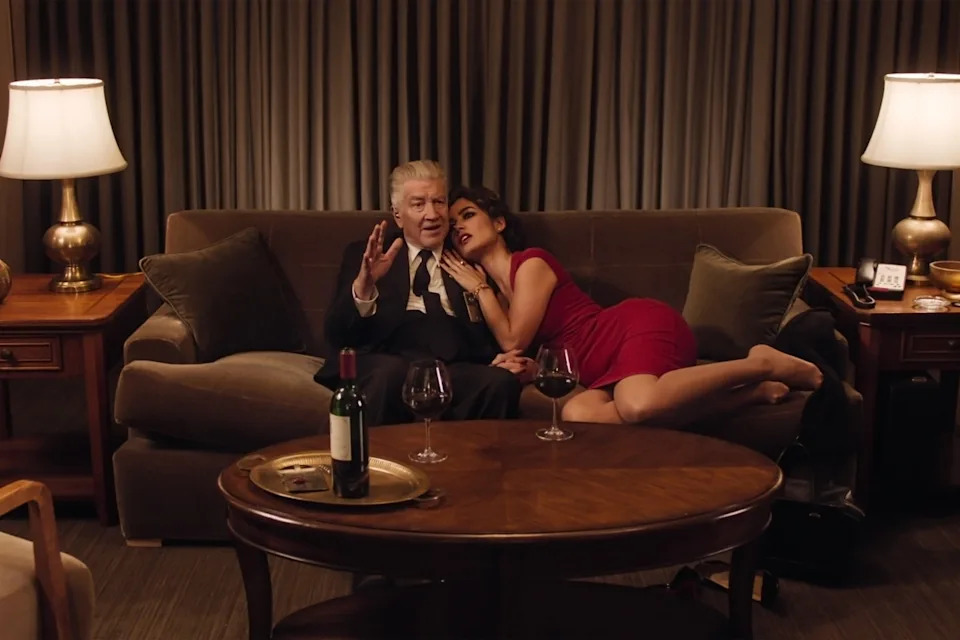 David Lynch in ‘Twin Peaks: The Return’SHOWTIME
David Lynch in ‘Twin Peaks: The Return’SHOWTIME“He lived his whole life like that,” Hurley said. “He would craft everything down to every detail. He literally curated and designed his whole experience on life: Where he lived, where he worked, where he moved. It was incredible.”
Chasing Emotion
Sound and music provided Lynch the “emotional spark” for so much of his art.
AdvertisementAdvertisement#«R2fe4kr8lb2m7nfddbH1» iframe AdvertisementAdvertisement#«R4fe4kr8lb2m7nfddbH1» iframe“Sound is a very unique thing. Sound and music, these things of vibrations, at that certain window of frequency, it does something to us as humans. It is a carrier tone for our emotions,” said Hurley. “When you have a brain like [David’s], that is so tuned into emotional learning, there’s something that grabbed him and it set up this intense glowing breadcrumb where he wanted to follow and chase that feeling.”
Lynch himself told the origin story of when he was first inspired to make a film while studying at the Pennsylvania Academy of Fine Arts. While working on a painting of a woman in a garden at night, he heard wind. He saw the green in the painting move, the still life becoming a moving picture in his mind. For Lynch, something so non-narrative as wind inspired him to pursue a new medium. Hurley said he saw the anecdote play out every day and believes it is the connective tissue to other great directors.
“I think for filmmakers in general, it’s the ones who are masters at their craft who are chasing feelings and figuring out the architecture of how to design that feeling for an audience,” said Hurley.
Lowering the Barometer
Like the wind in the painting, Lynch would often get transfixed by something seemingly small. On the podcast, Hurley said Lynch became fascinated by the sounds he could generate scratching on his favorite chair in the studio.
AdvertisementAdvertisement#«R2me4kr8lb2m7nfddbH1» iframe AdvertisementAdvertisement#«R4me4kr8lb2m7nfddbH1» iframe“It’s funny, going back and listening to some of these [recordings], they all sound the same, but like everyone he would start scratching a little rhythm, and he’d be say [Hurley doing an impression of an excited Lynch], ‘Listen to that Dean [pause], listen to that, Dean.’ It would almost be like he’d forgotten the last time and he would get re-excited,” said Hurley. “It was always a reset for him. He was incredibly fired up about the smallest little things, just the simple act of life dancing before his eyes and ears.”
Hurley admitted he could be dismissive — “Yeah, I’ve got that recording already” — but he grew to see how moments like this were key to Lynch’s process.
“He could stay a long time in that zone,” said Hurley. “The lowering of the barometer is bringing down that awareness and interest to a sort of subatomic level that most people are not vibrating on that zone. One of his favorite quotes was ‘Where the attention goes, that becomes lively.’”
What Hurley described as Lynch’s “lowering of the barometer” was exploration done without a specific project, story, or medium in mind. The scratching could lead to a song, or the emotional underpinning of a scene in “Twin Peaks,” or the concept for window display. The longer he remained in the zone of following a spark of interest, the greater the possibility of discovery and alchemy.
AdvertisementAdvertisement#«R2re4kr8lb2m7nfddbH1» iframe AdvertisementAdvertisement#«R4re4kr8lb2m7nfddbH1» iframe“That lens of somebody like him is one I think a lot of the filmmakers that we gravitate to [have],” said Hurley. “They’re putting a magnifying glass over something that is often skimmed over, they’re elevating it to a hyper-focused level where you didn’t realize how deep that area was before.”
DYI and the Immediacy of Digital
Hurley wore many hats in Lynch’s world. On “Twin Peaks: The Return” he had many official titles because Lynch didn’t want to bring in specialized professionals every time he tried to make something. He preferred a more DIY, hands-on approach that allowed discoveries to evolve organically.
“That way he could impart more of himself and have a more of an action-and-reaction kind of process with the making of things,” said Hurley.
Hurley said this also explained Lynch’s instant love affair with digital technology in the 2000s.
AdvertisementAdvertisement#«R31e4kr8lb2m7nfddbH1» iframe AdvertisementAdvertisement#«R51e4kr8lb2m7nfddbH1» iframe“[Digital] reduced his time, specifically the action and reaction time; he wanted that feedback,” said Hurley. “He definitely took to digital like a duck to water because it just reduced, reduced, reduced, and also allowed him to go back to the early days of basically doing everything DIY himself, like with short films, having a Bolex and just having a small group of people.”
Extending the Process of Discovery
Much of Lynch’s creative life was about finding ways to extend the process of exploration and discovery. Even after their recordings transitioned from experimentation to the building blocks of a film, Hurley would come up with ways that allowed Lynch to extend his action-and-reaction process.
For example, Hurley would take a theme, like the sound of electricity in “Twin Peaks,” and use samplers to create a full keyboard array where each key had different sounds that Lynch could play.
“He liked discovery, so you put a garden of discovery in front of him and he would stumble over certain things, and then you could see which were exciting him [doing his excited Lynch impression again], ‘ I love that Dean. I love that,’” said Hurley.
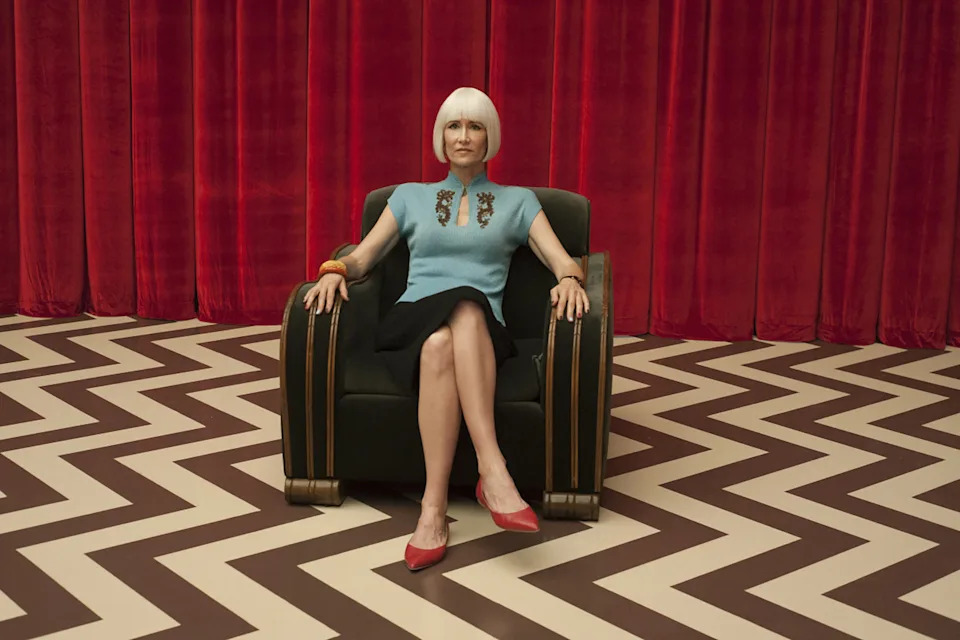 ‘Twin Peaks: The Return’©Showtime Networks Inc./Courtesy Everet / Everett Collection
‘Twin Peaks: The Return’©Showtime Networks Inc./Courtesy Everet / Everett CollectionThat which thrilled Lynch became the first step in building a palette. Lynch would categorize sounds, applying unusual names that spoke to him about the feeling of a section of the show or movie.
AdvertisementAdvertisement#«R39e4kr8lb2m7nfddbH1» iframe AdvertisementAdvertisement#«R59e4kr8lb2m7nfddbH1» iframe“He would be like, ‘Yeah, that section where it got really hairy,’ or ‘that really low mood stuff,” so you’d start to categorize that stuff as building blocks,” said Hurley. “You could chop it up, ‘Okay, I’ve got this here.’ ‘This is a distinctly different mood than this section.’ You just start slowly building the thing and then with that stuff floating all in the air, something would inspire something else. It’s really hard to talk about, because as it’s laid out in a linear fashion, when you got to the end, you could see, ‘Oh, that led to that, led to that.’ But when you’re in it, it feels like you’re in a dark room bumping into furniture.”
The Power of Formal Efficiency
The rise of digital sound made it much easier to build dense, multi-layered soundtracks, although not always to the benefit of the artform. One key lesson Hurley took from working with Lynch, and still applies to his work as a sound editor today, is the power of restraint and efficiency.
“You can throw a bunch of different sounds [at a scene] trying to think more is better, but [David] was always interested in ‘Let’s find a sound for this.’ It was about finding the exact right sound to elicit the emotion,” said Hurley. “It creates an architecture of, ’Is this doing anything for us?’ If it’s not, get it out of there. Everything has its purpose.”
While working on “Twin Peaks: The Return,” Hurley saw how Lynch applied this principle across his creative process. Lynch often grew frustrated when collaborators focused on background details or secondary actions — anything he felt distracted from the primary focus of a scene.
AdvertisementAdvertisement#«R3fe4kr8lb2m7nfddbH1» iframe AdvertisementAdvertisement#«R5fe4kr8lb2m7nfddbH1» iframe“There’s a power in efficiency, and I think that goes across the board with him, with his writing, with his shot syntax,” said Hurley. “A director is someone who directs your attention. So when you have a scene, a tool of directing is what do I want them to pay attention to? Each element is an opportunity to exploit, to focus, to present in a way that crafts a feeling.”
Nurturing a Collective Wavelength
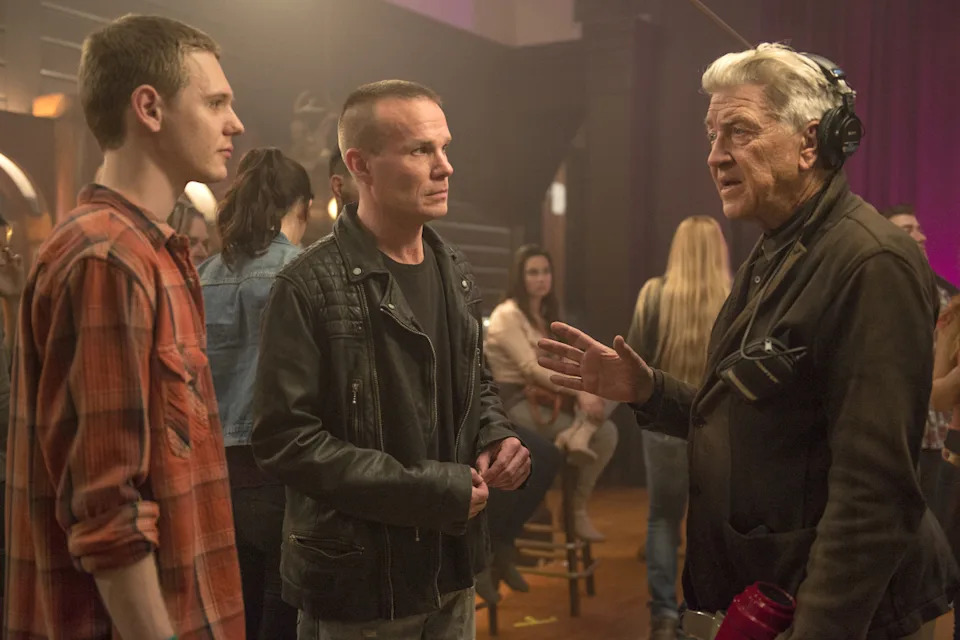 Twin Peaks Showtime Revival Jake Wardle, James Marshall David Lynch
Twin Peaks Showtime Revival Jake Wardle, James Marshall David LynchLynch’s studio was transformed into the post-production hub for all 18 episodes of “Twin Peaks: The Return.” He invited a small group of trusted collaborators into this tightly controlled, insular space. Like an unnecessary sound effect, anyone not essential to that process was kept outside the environment he so carefully maintained.
“I think that’s one of the clear-cut tools of David is that he unified the goals and intentions of a massive group of people so he could align people to his vantage point, to his goal, to the result he was after, and people latched onto that,” said Hurley. “And when everybody’s in the same house, there was a huge comfort factor for David because it’s all insular and it’s all his home, and I think that plays into it as well.”
Hurley said it was during the edit that he fully grasped the deeper alchemy of Lynch’s art. After more than a decade working on sound, he could now see how every element of Lynch’s craft fed into a unified creative process.
AdvertisementAdvertisement#«R3me4kr8lb2m7nfddbH1» iframe AdvertisementAdvertisement#«R5me4kr8lb2m7nfddbH1» iframe“You’re seeing different practitioners problem solve and you’re seeing what’s coming for you later [referring to dailies, and picture editing], and they’re walking in and hearing what’s coming later. It had a very hive mind vibe, it got everybody on the same wavelength,” said Hurley.
In the decade leading up to the third season of “Twin Peaks,” Lynch focused on smaller side projects and work outside of film and television. But according to Hurley, the “Twin Peaks” experience reignited his drive to pursue another large-scale project. At one point, “The Unrecorded Night” was briefly in motion until COVID brought everything to a halt.
“What happened after ‘Twin Peaks’ wrapped is I think he got rejuvenated for that process of being the conductor of a large orchestra for something like that. I think he loved the humanity, the camaraderie, the relationships, the circus of activity with projects like that definitely put the bug in his bonnet to want to do another large scale film or TV project,” said Hurley.
It’s our loss that he didn’t get to do his last film project. If there’s one thing we know for sure, it’s that Lynch and his process would have led to another creation unlike anything else we’ll see again.
AdvertisementAdvertisement#«R3re4kr8lb2m7nfddbH1» iframe AdvertisementAdvertisement#«R5re4kr8lb2m7nfddbH1» iframeTo listen to Dean Hurley’s interview about David Lynch, subscribe to the Toolkit podcast onApple,Spotify, or your favorite podcast platform
Best of IndieWire
The Best Thrillers Streaming on Netflix in July, from 'Vertigo' and 'Rear Window' to 'Emily the Criminal'
The Best Lesbian Movies Ever Made, from 'D.E.B.S.' and 'Carol' to 'Bound' and 'Pariah'
All 12 Wes Anderson Movies, Ranked, from 'Bottle Rocket' to 'The Phoenician Scheme'
Sign up for Indiewire's Newsletter. For the latest news, follow us on Facebook, Twitter, and Instagram.






